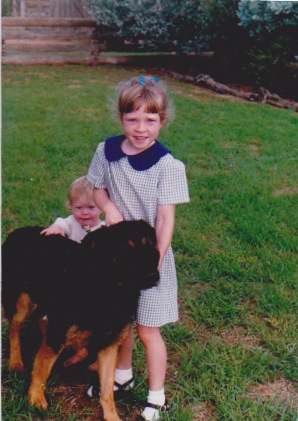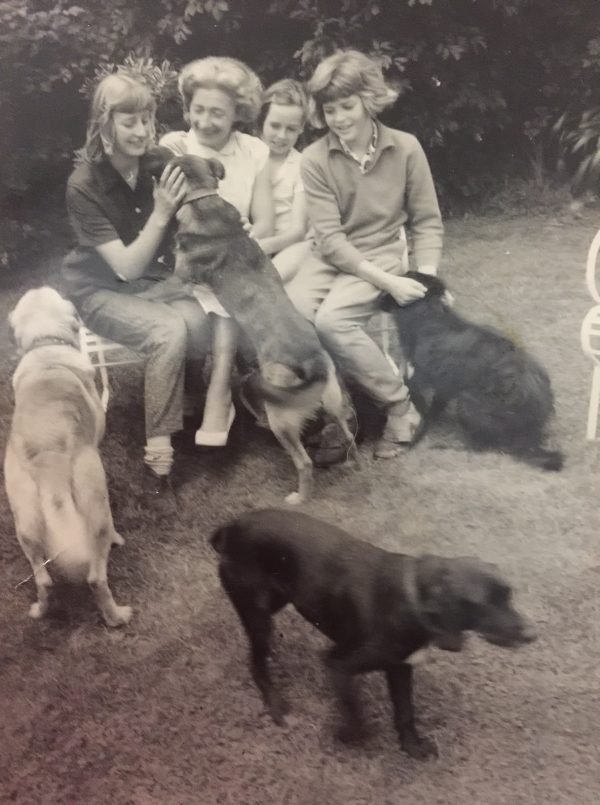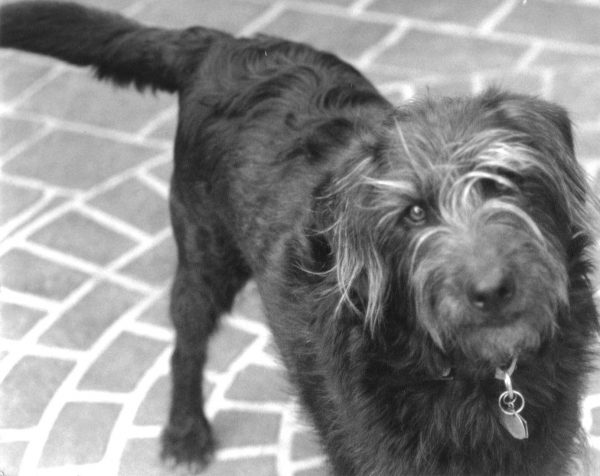I first started thinking about breeding way back in 1991, after attending a post graduate vet course in Sydney on dog behavioural problems.
Unsurprisingly, given the topic, a number of presenters mentioned the alarming statistics surrounding dog attacks. The majority of serious attacks were reported to be by entire male dogs of the larger breeds and this seems to still be the case in 2013. I can’t remember the exact numbers they cited, but contemporary figures suggest that 13,000 people are hospitalised in Australia each year – and that children twice as likely to be bitten, and far more likely to be bitten on the head or face.
As I made the long car trip home to my own small children – four girls, living with my husband Bruce and me on farm 25 kilometres north of Condobolin in central New South Wales – I started thinking about the reasons for this problem. Socialisation plays an enormous role, but gender and genetic factors were undeniable. Our well-trained and much beloved German Shepherd Jack could calmly endure hours of prodding from my daughters, but even he could be deadly when it came to other male dogs.
I thought about the dogs that I saw at my vet surgery every day. There were the purpose bred working dogs – the cattle dogs, kelpies and collies – who were fit, athletic and had great temperaments, but were completely inappropriate for the suburbs. The purebred dogs, who were often ill tempered and suffered from congenital and structural defects. And the strays, who I had the unfortunately duty of putting down, which were mostly healthy cross-breeds with a host of behavioural problems related to their poor breeding and even poorer socialisation.
Given that most people wanted dogs for companionship, rather than work or pageant purposes, it seemed that there wasn’t nearly enough effort being put into breeding healthy, friendly dogs that suited modern Australian families.
I also started to consider early age de-sexing, which I explain in more detail in my blog. Desexing puppies as babies before they are sold – to ensure that they never contribute to pounds or shelters and to minimise the risk of dominance aggression.
When I started to think what such a dog might look like, my thoughts immediately went to my first dog Lucky (the little black one in the foreground above). She was desexed, female Cocker cross Kelpie (we think), and she lived for another 11 years after that photo was taken. (I was travelling when she died, and Mum didn’t tell me until I got back because she knew it would spoil my holiday). Lucky was a gentle, medium-sized, loyal and intelligent friend.
Thinking about how I might deliberately breed dogs like Lucky, a recent newscast came to mind: the Guide Dogs Victorian had crossed a Standard Poodle and Labrador to create a hypo-allergenic guide dogs. I remember thinking the guide dog sounded crazy (guide dogs are the result of decades of selective breeding, and throwing a poodle in the mix would undo all of that), but the ‘Labradoodle’ sounded wonderful. Too big of course – but what about a Mini or Toy Poodle X Labrador?
Labradors are Australia’s favourite dog for a reason: their typically laid-back, amiable, affectionate and smart. But they are still responsible for a considerable number of attacks, shed like crazy, eat like a horse and are far too large for the average Australian home. Small Poodles are even smarter (second only to Border Collies, according to The Intelligence of Dogs), people-oriented and ideal for apartment owners, but they can be a bit of hyperactive and neurotic side.
I figured that a cross between the two would be an extremely smart, friendly, medium-sized shaggy dog – some might even be non-shedding and so hypoallergenic. And knowing what I did about genetics (I’d once started a PhD in the subject, but dropped out to become a vet when the lab work got too boring), I knew they’d benefit from hybrid vigour – a concept explained in more detail here.
So in the early 1990s I bough a white, male Toy poodle, Snowy, with a Black Labrador called Holly. And on the 1st of July 1994 Holly gave birth to Wally and Polly: the world’s first deliberately bred Miniature Labradoodles.
Over the next twenty years, almost all of my hypothesises about the Miniature Labradoodle proved correct. Every week I received emails from delighted owners, thanking me for supplying their families with affectionate, smart, gentle companions. A survey of completed in 2013 by 231 owners of my F1 labradoodles – both past and present – showed that the dogs lived to a median of 14 years, and that 90.2% of owners were very satisfied and with their dogs behaviour, and 87% with their ‘trainability’.
The only issues was shedding; only about 40% of our owners described their dogs as low or non-shedding.
As temperament has also been my first priority, I looked for ways to address this issues without forsaking all the things that made my Labradoodles so great. Fortunately, with the help of some wonderful Cavalier and Golden Retrievers, I’m now consistently breeding delightful, healthy, medium-sized, low-shedding Groodles, Mini-Groodles, Cavoodles and Cavadoodles.
Twenty-five years of breeding these wonderful family pets has greatly improve my knowledge of dog care and management, and I share much of this information on my blog. My blog also shares my views on the ethics of dog breeding and the importance of early desexing, good socialisation and training (and the far more fickle matter grooming).
You may come across some unpleasant publicity I experienced in 2013. You can read my explanation here





